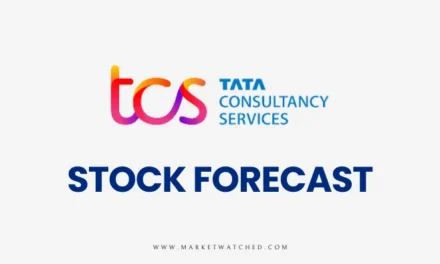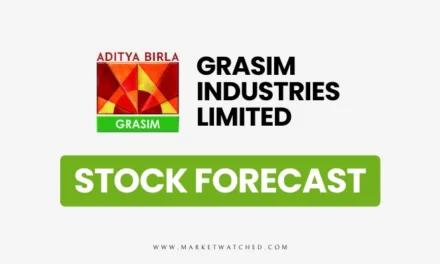
Tata Motors Stock Price Forecast 2024-2050: Detailed Long-Term Analysis
Tata Motors is an Indian multinational automotive company that produces trucks, vans, buses, and cars. Tata Motors is listed on the National Stock Exchange (NSE) and the Bombay Stock Exchange (BSE).
This detailed post will explore Tata Motors’s share price targets from 2024 to 2050, using various technical analysis approaches to provide long-term forecasts and predict targets up to 2050.
Overview of Tata Motors Limited
Tata Motors, originally established as Tata Engineering and Locomotive Company Limited in 1945, initially focused on manufacturing locomotives and engineering goods. Today, it stands as the largest automobile company in India. Tata Motors is a leader in the automotive industry, with a strong presence across compact, mid-size cars, and utility vehicles. It ranks among India’s top three passenger vehicles and is the dominant player in the commercial vehicle segment. Additionally, Tata Motors is the second-largest bus manufacturer globally and the fourth-largest truck manufacturer globally.
| Company Name | Tata Motors Limited |
| Industry | Automotive |
| Founded | 1945 |
| Country | India |
| Official Website | www.tatamotors.com |
On this page, you’ll find comprehensive information about the company’s current stock price, live charts, and the latest forecasts for both short- and long-term periods:
- Real-Time Stock Price: Updated every minute for the most current data.
- Technical Indicators: Updated according to specific time frames to provide timely insights.
- Financial Reports: Updated quarterly to reflect the latest financial performance.
- Stock Charts: Refreshed every minute for up-to-the-minute visual data.
Tata Motors Stock Price Forecast for Tomorrow and the Coming Week Based on the Last 30 Days.
Technical Analysis of Tata Motors Based on Indicators
You can use indicator-based technical analysis for Tata Motors Ltd. to identify better entry points in the market. Adjust the time frame to suit your needs for the best analysis.
Tata Motors’s technical analysis signals are categorized to help you easily understand the market trends:
- “Sell” or “Strong Sell”: Indicates that most signals are bearish (negative).
- “Buy” or “Strong Buy”: Indicates that most signals are bullish (positive).
Keep in mind that signals can vary across different time frames. For short-term analysis, it’s recommended to use settings ranging from 15 minutes to 2 hours. If you’re planning to hold Tata Motors Ltd. stock for more than a week, use settings that range from days to weeks.
Tata Motors Ltd. Financials Data
Use the landscape mode for best viewing on mobile devices.
Tata Motors Share Price Targets: 2024 to 2050 Snapshot
| Year | Minimum Price | Maximum Price |
|---|---|---|
| 2024 | ₹ 1,110 | ₹ 1,176 |
| 2025 | ₹ 1,177 | ₹ 1,365 |
| 2026 | ₹ 1,366 | ₹ 1,554 |
| 2027 | ₹ 1,555 | ₹ 1,742 |
| 2028 | ₹ 1,746 | ₹ 1,930 |
| 2029 | ₹ 1,934 | ₹ 2,169 |
| 2030 | ₹ 2,130 | ₹ 2,458 |
| 2040 | ₹ 7,493 | ₹ 9,277 |
| 2050 | ₹ 26,361 | ₹ 35,009 |
These “Tata Motors Limited” price targets are for reference purposes only. Short-term and long-term Tata Motors stock price predictions may vary due to the time series that were analyzed differently. This prediction assumes positive market sentiments, and this analysis does not cover any uncertainties in the company or global market conditions.
Tata Motors Share Price Target 2024
| Months | Minimum Price | Maximum Price |
|---|---|---|
| October 2024 | ₹ 1,110 | ₹ 1,146 |
| November 2024 | ₹ 1,146 | ₹ 1,160 |
| December 2024 | ₹ 1,161 | ₹ 1,176 |
● The initial price target for Tata Motors Limited in 2024 is estimated to be ₹1146.
● However, by the end of 2024, the price target is anticipated to rise to ₹1176 driven by bullish market trends.
Tata Motors Share Price Target 2025
| Months | Minimum Price | Maximum Price |
|---|---|---|
| January 2025 | ₹ 1,177 | ₹ 1,207 |
| February 2025 | ₹ 1,207 | ₹ 1,216 |
| March 2025 | ₹ 1,216 | ₹ 1,222 |
| April 2025 | ₹ 1,225 | ₹ 1,248 |
| May 2025 | ₹ 1,243 | ₹ 1,252 |
| June 2025 | ₹ 1,253 | ₹ 1,263 |
| July 2025 | ₹ 1,264 | ₹ 1,283 |
| August 2025 | ₹ 1,281 | ₹ 1,286 |
| September 2025 | ₹ 1,284 | ₹ 1,299 |
| October 2025 | ₹ 1,299 | ₹ 1,334 |
| November 2025 | ₹ 1,336 | ₹ 1,349 |
| December 2025 | ₹ 1,350 | ₹ 1,365 |
● The initial price target for Tata Motors Limited in 2025 is estimated to be ₹1207.
● With favorable market conditions, the mid-year price target for Tata Motors Ltd. could reach ₹1263.
● However, by the end of 2025, the price target is expected to reach ₹1365 considering bullish market trends.
Tata Motors Share Price Target 2026
| Months | Minimum Price | Maximum Price |
|---|---|---|
| January 2026 | ₹ 1,366 | ₹ 1,396 |
| February 2026 | ₹ 1,396 | ₹ 1,405 |
| March 2026 | ₹ 1,405 | ₹ 1,413 |
| April 2026 | ₹ 1,413 | ₹ 1,438 |
| May 2026 | ₹ 1,433 | ₹ 1,440 |
| June 2026 | ₹ 1,442 | ₹ 1,453 |
| July 2026 | ₹ 1,453 | ₹ 1,472 |
| August 2026 | ₹ 1,471 | ₹ 1,475 |
| September 2026 | ₹ 1,475 | ₹ 1,488 |
| October 2026 | ₹ 1,488 | ₹ 1,523 |
| November 2026 | ₹ 1,525 | ₹ 1,539 |
| December 2026 | ₹ 1,540 | ₹ 1,554 |
● The initial price target for Tata Motors Limited in 2026 is estimated to be ₹1396.
● With favorable market conditions, the mid-year price target for Tata Motors Ltd. could reach ₹1453.
● However, by the end of 2026, the price target is expected to reach ₹1554 considering bullish market trends.
Tata Motors Share Price Target 2027
| Months | Minimum Price | Maximum Price |
|---|---|---|
| January 2027 | ₹ 1,555 | ₹ 1,585 |
| February 2027 | ₹ 1,585 | ₹ 1,594 |
| March 2027 | ₹ 1,595 | ₹ 1,601 |
| April 2027 | ₹ 1,602 | ₹ 1,628 |
| May 2027 | ₹ 1,622 | ₹ 1,630 |
| June 2027 | ₹ 1,632 | ₹ 1,642 |
| July 2027 | ₹ 1,642 | ₹ 1,661 |
| August 2027 | ₹ 1,660 | ₹ 1,665 |
| September 2027 | ₹ 1,663 | ₹ 1,677 |
| October 2027 | ₹ 1,677 | ₹ 1,711 |
| November 2027 | ₹ 1,713 | ₹ 1,730 |
| December 2027 | ₹ 1,729 | ₹ 1,742 |
● The initial price target for Tata Motors Limited in 2027 is estimated to be ₹1585.
● With favorable market conditions, the mid-year price target for Tata Motors Ltd. could reach ₹1642.
● However, by the end of 2027, the price target is expected to reach ₹1742 considering bullish market trends.
Tata Motors Share Price Target 2028
| Months | Minimum Price | Maximum Price |
|---|---|---|
| January 2028 | ₹ 1,746 | ₹ 1,774 |
| February 2028 | ₹ 1,775 | ₹ 1,785 |
| March 2028 | ₹ 1,784 | ₹ 1,791 |
| April 2028 | ₹ 1,794 | ₹ 1,817 |
| May 2028 | ₹ 1,812 | ₹ 1,821 |
| June 2028 | ₹ 1,821 | ₹ 1,831 |
| July 2028 | ₹ 1,832 | ₹ 1,851 |
| August 2028 | ₹ 1,849 | ₹ 1,854 |
| September 2028 | ₹ 1,853 | ₹ 1,866 |
| October 2028 | ₹ 1,867 | ₹ 1,904 |
| November 2028 | ₹ 1,904 | ₹ 1,919 |
| December 2028 | ₹ 1,918 | ₹ 1,930 |
● The initial price target for Tata Motors Limited in 2028 is estimated to be ₹1774.
● With favorable market conditions, the mid-year price target for Tata Motors Ltd. could reach ₹1831.
● However, by the end of 2028, the price target is expected to reach ₹1930 considering bullish market trends.
Tata Motors Share Price Target 2029
| Months | Minimum Price | Maximum Price |
|---|---|---|
| January 2029 | ₹ 1,934 | ₹ 1,965 |
| February 2029 | ₹ 1,964 | ₹ 1,974 |
| March 2029 | ₹ 1,973 | ₹ 1,979 |
| April 2029 | ₹ 1,982 | ₹ 2,006 |
| May 2029 | ₹ 2,001 | ₹ 2,010 |
| June 2029 | ₹ 2,010 | ₹ 2,020 |
| July 2029 | ₹ 2,021 | ₹ 2,042 |
| August 2029 | ₹ 2,039 | ₹ 2,044 |
| September 2029 | ₹ 2,047 | ₹ 2,104 |
| October 2029 | ₹ 2,063 | ₹ 2,124 |
| November 2029 | ₹ 2,082 | ₹ 2,144 |
| December 2029 | ₹ 2,105 | ₹ 2,169 |
● The initial price target for Tata Motors Limited in 2029 is estimated to be ₹1965.
● With favorable market conditions, the mid-year price target for Tata Motors Ltd. could reach ₹2020.
● However, by the end of 2029, the price target is expected to reach ₹2169 considering bullish market trends.
Tata Motors Ltd. Share Price Target 2030
| Months | Minimum Price | Maximum Price |
|---|---|---|
| January 2030 | ₹ 2,130 | ₹ 2,198 |
| February 2030 | ₹ 2,130 | ₹ 2,198 |
| March 2030 | ₹ 2,134 | ₹ 2,203 |
| April 2030 | ₹ 2,143 | ₹ 2,214 |
| May 2030 | ₹ 2,156 | ₹ 2,230 |
| June 2030 | ₹ 2,173 | ₹ 2,248 |
| July 2030 | ₹ 2,192 | ₹ 2,270 |
| August 2030 | ₹ 2,218 | ₹ 2,299 |
| September 2030 | ₹ 2,248 | ₹ 2,331 |
| October 2030 | ₹ 2,285 | ₹ 2,370 |
| November 2030 | ₹ 2,327 | ₹ 2,415 |
| December 2030 | ₹ 2,368 | ₹ 2,458 |
● The initial price target for Tata Motors Limited in 2030 is estimated to be ₹2198.
● With favorable market conditions, the mid-year price target for Tata Motors Ltd. could reach ₹2248.
● However, by the end of 2030, the price target is expected to reach ₹2458 considering bullish market trends.
Tata Motors Ltd. Share Price Target 2040
| Months | Minimum Price | Maximum Price |
|---|---|---|
| January 2040 | ₹ 7,493 | ₹ 8,294 |
| February 2040 | ₹ 7,493 | ₹ 8,294 |
| March 2040 | ₹ 7,508 | ₹ 8,314 |
| April 2040 | ₹ 7,538 | ₹ 8,356 |
| May 2040 | ₹ 7,583 | ₹ 8,414 |
| June 2040 | ₹ 7,644 | ₹ 8,483 |
| July 2040 | ₹ 7,713 | ₹ 8,567 |
| August 2040 | ₹ 7,804 | ₹ 8,674 |
| September 2040 | ₹ 7,909 | ₹ 8,795 |
| October 2040 | ₹ 8,039 | ₹ 8,943 |
| November 2040 | ₹ 8,188 | ₹ 9,113 |
| December 2040 | ₹ 8,331 | ₹ 9,277 |
● The initial price target for Tata Motors Limited in 2040 is estimated to be ₹8294.
● With favorable market conditions, the mid-year price target for Tata Motors Ltd. could reach ₹8483.
● However, by the end of 2040, the price target is expected to reach ₹9277 considering bullish market trends.
Tata Motors Ltd. Share Price Target 2050
| Months | Minimum Price | Maximum Price |
|---|---|---|
| January 2050 | ₹ 26,361 | ₹ 31,299 |
| February 2050 | ₹ 26,361 | ₹ 31,299 |
| March 2050 | ₹ 26,413 | ₹ 31,377 |
| April 2050 | ₹ 26,519 | ₹ 31,534 |
| May 2050 | ₹ 26,678 | ₹ 31,755 |
| June 2050 | ₹ 26,892 | ₹ 32,012 |
| July 2050 | ₹ 27,134 | ₹ 32,332 |
| August 2050 | ₹ 27,454 | ₹ 32,736 |
| September 2050 | ₹ 27,824 | ₹ 33,191 |
| October 2050 | ₹ 28,281 | ₹ 33,749 |
| November 2050 | ₹ 28,804 | ₹ 34,390 |
| December 2050 | ₹ 29,308 | ₹ 35,009 |
● The initial price target for Tata Motors Limited in 2050 is estimated to be ₹31299.
● With favorable market conditions, the mid-year price target for Tata Motors Ltd. could reach ₹32012.
● However, by the end of 2050, the price target is expected to reach ₹35009 considering bullish market trends.
Tata Motors Ltd. Chart Online
LIC India Share Price Target: Long-term Forecast & Analysis
LIC stands for Life Insurance Corporation of India. It started its operations as a corporate firm after the LIC Act came into effect in July 1956. READ MORE
Recommendations: Should I invest in Tata Motors Limited stock or sell it?
Tata Motors Group is a prominent global automobile manufacturer with a diverse portfolio including commercial, passenger, and electric vehicles. As a frontrunner in India’s electric vehicle transition, the company holds a significant position in one of the fastest-growing automotive markets worldwide. Given its strong market presence and leadership in EV innovation, Tata Motors shares are considered a solid investment option, with expectations for a positive trend in the future.
Frequently Asked Questions (FAQ’s)
What is the Tata Motors share price target for 2025?
As per our stock forecast, Tata Motors’s share price target can be up to ₹1365 in 2025.
What is Tata Motors stock projected to be worth in 5 years?
Our estimates show that Tata Motors’s stock price could reach ₹2169 in the next 5 years.
What is the Tata Motors share price target for 2030?
As per our stock forecast, Tata Motors’s share price target can be up to ₹2458 in 2030.
What is Tata Motors stock projected to be worth in 10 years?
Our estimates show that Tata Motors’s stock price could reach ₹4269 in the next 10 years.
What is the Tata Motors share price target for 2035?
As per our stock forecast, Tata Motors’s share price target can be up to ₹4876 in 2035.
What is the Tata Motors share price target for 2040?
As per our stock forecast, Tata Motors’s share price target can be up to ₹9277 in 2040.
What is the Tata Motors share price target for 2050?
As per our stock forecast, Tata Motors’s share price target can be up to ₹35009 in 2050.
Price Prediction Methodology
The following tools are utilized for making predictions:
- Consensus and Expert Opinion: Forecasts are also informed by the consensus of expert opinions, providing a well-rounded perspective.
- Technical Analysis: This fundamental tool involves studying price charts and employing various indicators to forecast future price movements. The analysis is primarily conducted on medium- and long-term time frames for enhanced accuracy.
- Statistical Methods: These are used to evaluate the likelihood, type, and intensity of fundamental factors that could influence price fluctuations.
- Predictive Modeling: This approach leverages statistical algorithms to forecast future prices based on historical data patterns.















